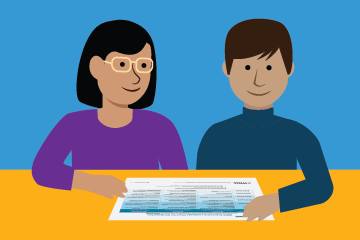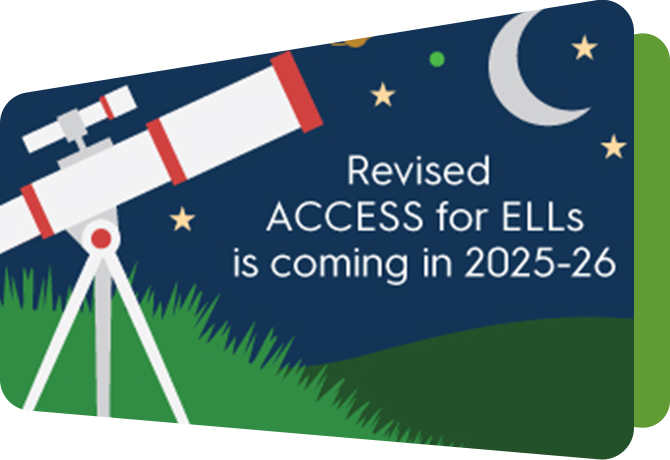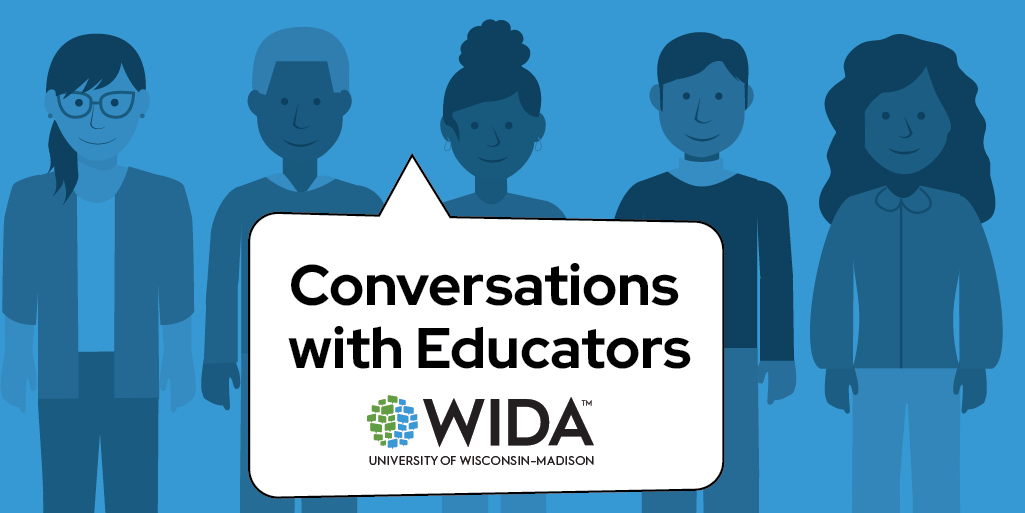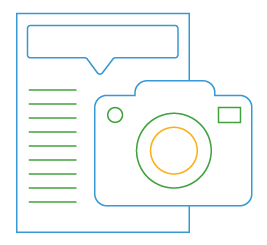This WIDA Snapshot provides guidance on how to use the WIDA Language Charts to collaborate and plan instruction.
 Welcome! If you're new to the WIDA Language Charts, you're in the right place. These charts are powerful tools designed to help classroom and language teachers work together to support multilingual learners. They connect assessment to instruction and provide a shared language for talking about students’ language development.
Welcome! If you're new to the WIDA Language Charts, you're in the right place. These charts are powerful tools designed to help classroom and language teachers work together to support multilingual learners. They connect assessment to instruction and provide a shared language for talking about students’ language development.
This Snapshot explores how the Language Charts can support collaboration and improve teaching and learning for multilingual learners.
What Are the WIDA Language Charts?
The Language Charts are an extension of the WIDA English Language Development Standards Framework, 2020 Edition. Read our article “How to use our new language charts right now” to get a quick understanding of what they are and how they were developed.
Until WIDA ACCESS scores for the 2025-2026 school year are released, the Language Charts help educators with the following:
- Get familiar with the revised expectations of WIDA ACCESS and WIDA ACCESS for Kindergarten.
- Collaborate with content area colleagues.
- Plan curriculum, instruction and classroom assessment.
- Trace student growth in language development over time.
They focus on two broad types of language use:
- Interpretive: Listening, reading and viewing
- Expressive: Speaking, writing and representing
The Language Charts break down language into the following three dimensions:
- Discourse: How ideas are organized and connected
- Sentence: The structure and complexity of sentences
- Word/Phrase: Vocabulary and word choice
Use the Language Charts to Collaborate
Multilingual learners thrive when classroom and language teachers work together. The Language Charts give teachers a common tool to team up, as follows:
- Talk about student progress.
- Plan units that build both content knowledge and language skills.
- Use classroom assessments to adjust instruction in real time.
Let’s look at three key ways to use the charts in collaborative conversations.
Collaborative Conversation #1: Understanding Language Use by Purpose
The Language Charts don’t just list language features — in combination with the Language Expectations in the ELD Standards Framework, 2020 Edition, they show how students use language for different purposes. These purposes are called Key Language Uses and include the following:
- Narrate
- Inform
- Explain
- Argue
For example, when a student is narrating, you might look at
- How well they organize events in a story (Discourse)
- The types of sentences they use (Sentence)
- Their use of descriptive vocabulary (Word/Phrase)
Tip for Collaboration: When planning a unit, ask the following questions: “What is the main language purpose here? Are students explaining, informing, narrating or arguing?”
Then, use the Language Expectations to identify the language features students will need to succeed. Use the Language Charts to scaffold your end-of-unit assessment and lessons within the unit.
For example, a language target for the unit in Language Arts for grades 6-8 might look like ELD-LA.6-8.Inform.Expressive. Construct informational texts in Language Arts that introduce and define topics and/or entities for audiences through generalized nouns and descriptive titles to introduce a topic, such as, “Revolutions, intellectual or economic movements?”
Collaborative Conversation #2: Describing Growth Over Time
The Language Charts help you track how students’ language develops across the year. You can use them with
- Portfolios
- End-of-unit projects
- Quarterly writing or speaking samples
To describe a student’s overall level
- Look at their work across the three dimensions (Discourse, Sentence, Word/Phrase).
- Identify the End of Level reached in at least two of the three dimensions.
- Confirm consistency with multiple pieces of evidence.
Tip for Collaboration: Set aside time each quarter to review student samples together. Use the charts to discuss growth and plan for the next steps.
Collaborative Conversation #3: Planning Instruction with Language in Mind
You can also use the Language Charts to plan instruction. Start by identifying the unit target — what students need to know and do by the end of the unit. Then, identify the end-of-unit assessment using the Language Charts for scaffolding. Align your lesson objectives with the language features students need to develop.
Here’s an example:
Unit Target (Grade 4 Science): Students will explain how natural forces like water and wind shape the land over time.
WIDA Language Expectations: ELD-SC.4-5.Explain (both Expressive and Interpretive modes)
Sample Lesson Objective: Students will use vocabulary words like weathering, erosion, and sediment to describe observations by labeling diagrams and participating in a vocabulary activity.
During lessons, observe how much support students need and decide which of the following three levels of scaffolding to apply:
- Heavy scaffolding: Lots of modeling and support.
- Moderate scaffolding: Some prompts or sentence starters.
- Minimal scaffolding: Students work more independently.
Tip for Collaboration: Use these observations to adjust instruction. Ask: “What kind of scaffolding helped most?” and “What can we reduce or increase next time?”
Formative Assessment Prompts: Connecting Classroom Assessment Data to Instruction
Below the Language Charts, you will find four questions designed to bridge the gap between observing student language use and planning effective instruction. When gathering data on what students can do, consider these prompts to guide reflection and next steps:
- Student capabilities: What can the student do with language?
- Leveraging student assets: How can I connect to the student's social, cultural, and multilingual strengths and interests?
- Targeted feedback: What concrete feedback will move the student forward?
- Instructional support: What scaffolding and modalities will increase student engagement?
Final Thoughts: Making the Most of the Charts
The Language Charts are not just assessment tools — they’re conversation starters. They help you and your colleagues team up to do the following:
- Share insights about student language development.
- Plan instruction that builds both content and language.
- Monitor progress and celebrate growth.
The following are a few ways to get started:
- Schedule regular check-ins with your teaching partner(s).
- Bring student work samples to team meetings.
- Use the Language Charts to set shared goals for language development.
- Reflect on what’s working and what needs adjusting.
Remember, collaboration is a journey. The Language Charts give you a map — but it’s your shared expertise what brings it to life.





